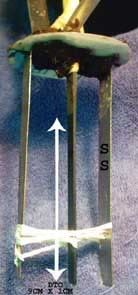



| Quote: |











| Quote: |

| Quote: |
| Quote: |

 . The ions are conspiring against you. Did you get perchlorate when you used NaCl? I
don't remember if you added a catalyst like a fluoride or a persulfate. Are you getting high chlorate? IF so then maybe your chlorate is being
reduced at the cathode. Don't know but trying using a bigger cathode.
. The ions are conspiring against you. Did you get perchlorate when you used NaCl? I
don't remember if you added a catalyst like a fluoride or a persulfate. Are you getting high chlorate? IF so then maybe your chlorate is being
reduced at the cathode. Don't know but trying using a bigger cathode.